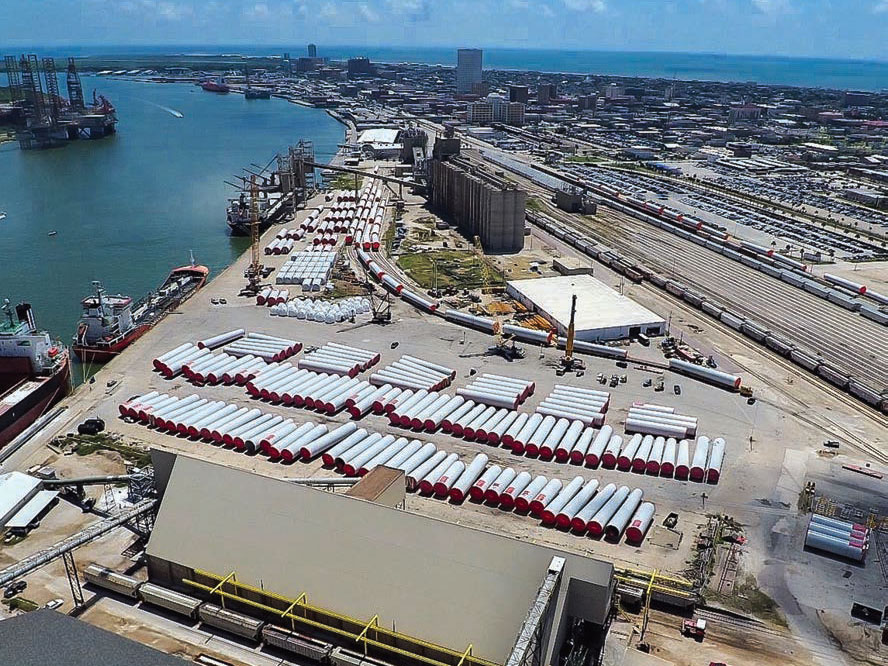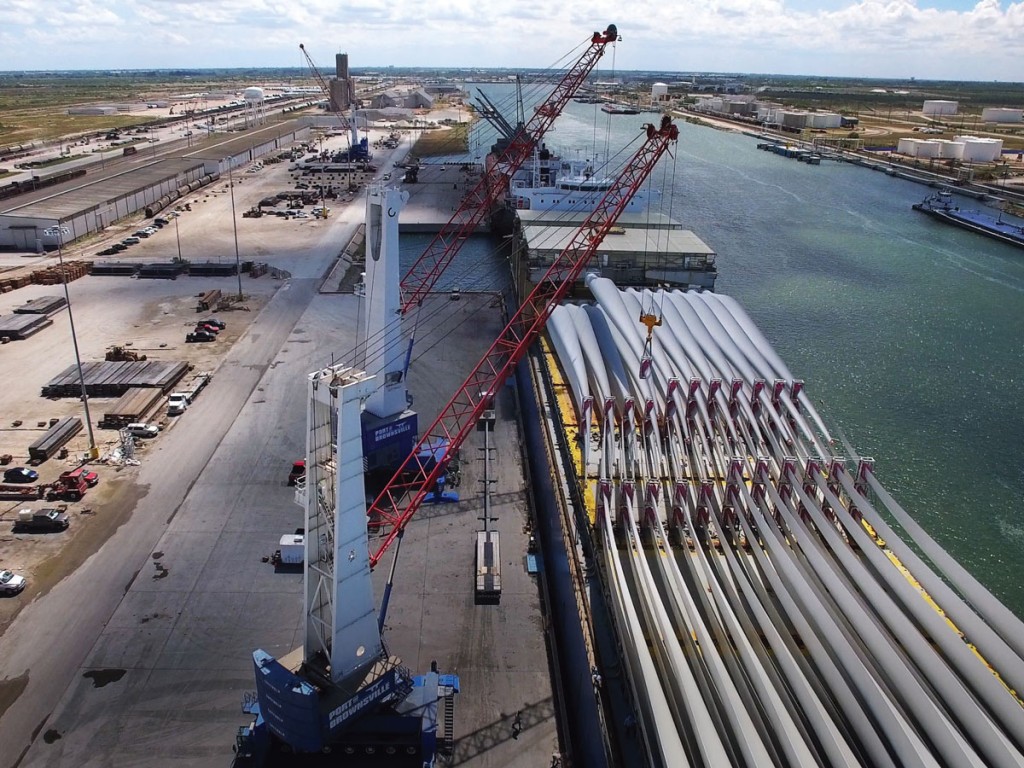
Texas’ seaports enjoy a variety of project cargo. That’s a broad industry category. Along Texas’ Gulf Coast, though, there are a couple dominant trades.
Components for commercial wind turbines is the largest project cargo for ports in Brownsville and Galveston.
At the Port of Brownsville, the largest single project cargo category is components for commercial wind turbines, according to Eduardo Campirano, CEO and port director.
Rodger Rees, Galveston Wharves port director and CEO, indicates that in 2021, the Port of Galveston set a record for wind turbine cargo, importing 3,172 turbine pieces with a total weight of 212,000 tons. As a result, wind project cargo is a top revenue and jobs generator at the port.
“Project cargo, particularly wind turbine components, makes up a large share of the Port of Galveston’s cargo business and related jobs,” Rees said. “We’ve been moving wind turbine parts through our port for more than a decade. As this sustainable energy industry has grown, so has the amount of wind turbine cargo we move.”
The huge white blades – which can be as long as 260 feet – are the most conspicuous feature of the business. But Campirano indicates that all pieces of the massive structures pass through Brownsville. This involves tower and cone sections, which also are no small feat for logistics planning.
Rees said, “Although wind cargo moves through several ports on the Gulf Coast, the Port of Galveston is considered a primary point of entry for wind components from Mexico, Canada, Europe and Asia due to its prime location, transportation infrastructure and experienced labor.”
With recent passage of federal legislation renewing tax credits for wind turbine projects, wind cargo imports are expected to remain strong, according to the Galveston CEO.
Galveston handles wind turbine components from several major manufacturers, including General Electric, Siemens-Gamesa, Acciona-Nordex and Vestas.
Rees said no special infrastructure is needed for this cargo. The components are transferred from the vessel by ship cranes and shore cranes directly to truck trailers and rail cars.
For Brownsville, these components are imported from a variety of countries, which recently have included India, South Korea and Spain. Other countries have shipped wind inputs in the past.
Campirano said the blades passing through Brownsville are trucked across the Rio Grande from a nearby Matamoros manufacturing plant, the German-owned Nordex Acciona. Recently, many of these pass through Brownsville for intrastate construction in a nearby south Texas wind farm, which is erecting 75 high towers.

Brownsville Rail Connection
Brownsville has rail infrastructure for Mexican and offshore imports to ship into the U.S. interior, and to Canada, reaching terminals as far as Alberta.
Specialized rail cars, triple the length of ordinary box cars carry wind blades on the Port of Brownsville’s short line Brownsville Rio Grande International Railway (BRG), operated by OmniTRAX. In a typical week, 30-35 blades leave Brownsville by rail.
Generally, in 2021 BRG handled an all-time high of 65,865 loaded railcars. This was a 22 percent increase from 2020.
Freight headed into Mexico connects on Rio Grande International to the Kansas City Southern de Mexico. Campirano said 85 percent of the rail moves from Brownsville are south bound.
But the northbound freight links with Union Pacific or BNSF.
Barges and vessels carrying wind generating equipment from Brownsville of course have specialized equipment to handle this cargo. Receivers of wind components are customers in numerous countries, and other U.S. seaports.
Given the global energy status, it’s a bright future for all involved in wind turbines.
Offshore wind generators are quickly coming online. Brownsville will be an indirect business beneficiary of that category, Campirano said.
Rees cites several Galveston advantages for moving wind cargo by truck and rail to destinations across Texas and the Midwest. First, the port is just 45 minutes from open seas. Galveston is served by two Class 1 railroads, which have “some of the best clearances to get the large components to their destinations.” Truck clearances are also good, with the port being a ten-minute drive to Interstate 45. Galveston also has an “experienced labor force consistently praised by our wind logistics companies.”
Space Freight
Other project cargo that is very much a part of our future belongs to SpaceX.
The SpaceX’s Starbase - a spaceport, production, and development facility for Starship rockets is in Boca Chica, TX, which is essentially at the mouth of Brownsville’s channel.
The Port of Brownsville serves Starbase’s maritime shipping needs, having made many moves with fuel tanks. Brownsville also helps the SpaceX company with difficult inland shipping projects.
As to other project cargo, “we have moved all kinds of cargo in the past. We can handle a whole host of large products when the opportunity comes,” Campirano noted.
While business is booming for the Port of Houston Authority, project cargo is “not a high menu item now,” Jeff Davis, chief port operations officer told AJOT in September.
Over time, wind generating components and other project cargo have been a significant business for Houston.
This year, Houston’s “800-pound gorilla” is importing pipe to support oil drilling. Davis explained that the U.S. oil industry may be on pause now, but orders for components such as this pipe don’t quickly adjust to oil production.

Follow us on social media: